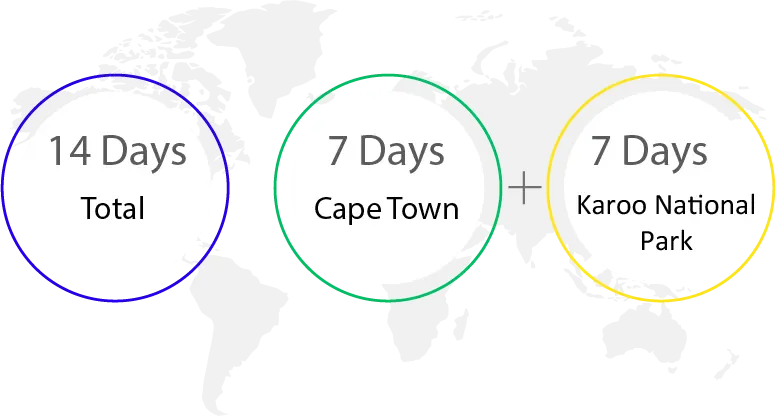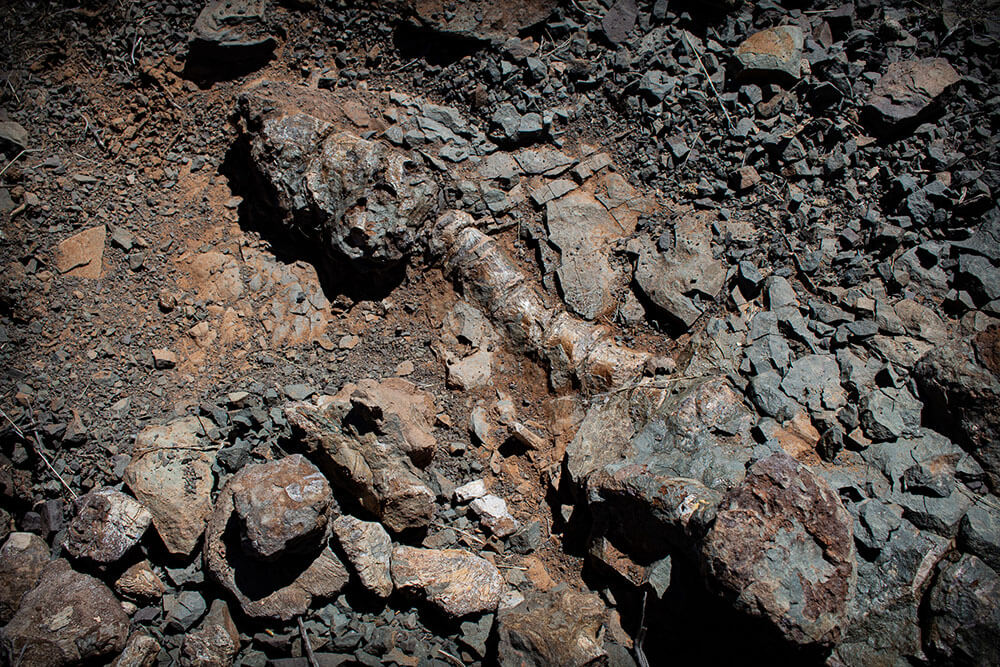Course Outline
Palaeo-forensics: Reconstructing the life and times of the ancient Karoo
Instruction
Professor Roger M.H.Smith

Instructor Information
The course offers the student an opportunity to become immersed in the complexities of reconstructing ancient ecosystems through the detailed study of fossils embedded in the rocks in which they were buried millions of years ago. Such taphonomic investigation of fossils necessitates recording data at the point of discovery, which means that much of the practical side of this course will be conducted in the field. Students will be given the theoretical background to Karoo stratigraphy and vertebrate taphonomy at UCT and then travel to the field to apply the new palaeo-forensics approach to in-situ fossils. Eventually the students will be able to gather enough evidence to reconstruct the sequence of events that led to the death and final burial of these long-extinct animals on the ancient Karoo floodplains some 255 million years ago.
Course Summary
The course of 6 lectures held at UCT will give the students a good background to taphonomy (the study of natural deth and burial) with particular relevance to the Permian tetrapod fossils of the Karoo Supergroup. They will also be introduced to the geological evidence for rapid global warming causing the greatest mass extinction get recorded at the end of the Permain period 252 million years ago.
A day trip to the Karoo palaeontology laboratory and collections at Iziko South African Museum in Cape Town will finish with a guided tour of the Stone Bones and African Dinosaurs galleries. The following day will be spent at an active dig site museum north of Cape Town at Langebaanweg. This is an early Pliocene (5Mya) bonebed that is currently the most diverse concentration of terrestrial vertebrate fossils of this age worldwide. We will be mainly concerned with observing the evidence and figuring out the taphonomic pathway that led to such a unique occurrence.
The remainder of the course will be based at the Karoo National Park near Beaufort West. Days will be spent visiting known fossil bearing outcrops, looking for fossils and taphonomically logging all new finds.
Some sedimentologically interesting sites will also give a better understanding of the ancient landscapes and surface precesses that let to bone bural and subsequent fossilization. Evenings spent at the Park’s visitor centre can be times for augmentation and consolidation of notes with informal seminars.

Course Objectives
- Develop an experience-based understanding of how evolution works
- Develop very specific understanding of taphonomy and taphonomic pathways;
- How to use field equipment, excavating methods, data capture;
- How to interpret taphonomic and sedimentological evidence
- Gain knowledge of ancient terrestrial ecosystems.
- Understand the role of rapid climate change in mass extinctions
- Enhance quality of thought as to “your inner reptile”
- Appreciate the potential for an improved “deep-time” understanding of where we came from.
Course Outcomes
- Improved understanding of evolution, mass extinctions and ancient terrestrial ecosytems
- Recognising some the anatomical adaptations in Permian mammal-like reptiles that eventually gave rise to mammals.
- Experience of vertebrate fossil prospecting and best practice data capture of individual finds at fossil localities.
- Become engaged in the study of palaeo-forensics and its usefulness in adding hitherto unknown details to palaeolandscape reconstructions.
- An awareness of the advantges of field investigations of the sedimentary rocks and the embedded fossils together at the point of discovery
- An awareness of the international best practive surrounding the prospecting and collecting of fossils, and the legal aspects of fossil hunting in South Africa.
Course Structure

The programme runs over 2 weeks
5 days of lectures and museum visits based at UCT followed by a day off and then 6 days in the field.

Day 1 UCT (2 sessions) Taphonomic principles and case study of mammal-like reptiles preserved in different palaeoenvironments of Late Permian Karoo floodplains (including trackways, burrows and broods).

Day 2 UCT (2 sessions) Geological and taphonomic evidence for prolonged aridity (drought induced die-off) during and following the End-Permian Mass extinction: evidence from South African Karoo Basin.

Day 3 UCT Morning (1 session) Taphonomy of bonebeds and genesis of an Early Pliocene Sivathere dominated bonebed at West Coast Fossil Park
Afternoon – visit to Prof Chinsamy-Turan palaeohistology laboratory at UCT

Day 4 Iziko Morning behind-the-scenes visit to fossil prep labs and collections
Afternoon guided tour of fossil galleries and rest of museum.

Day 5 West Coast Fossil Park all day

Day 6 Rest day

Day 7 Travel to Karoo National Park (5hrs) pm Visitor centre and Fossil trail

Day 8-11 Daily visits to various fossil sites within 100km radius of the Park

Day 12 Travel back to Cape Town (5hrs)
Optional Readings
The following books and articles are recommended:
Smith, R.M.H. (1993). Vertebrate Taphonomy of Late Permian Floodplain Deposits in the Southwestern Karoo Basin of South Africa. PALAIOS, 8:45–67. doi:10.2307/3515221
Smith, R.M.H., Botha, J., Viglietti, P. A. (2022). Taphonomy of drought-afflicted tetrapods in the Early Triassic Karoo Basin, South Africa Palaeogeography, Palaeoclimatology, Palaeoecology 604 :1-19 111207
https://doi.org/10.1016/j.palaeo.2022.111207
Behrensmeyer, A.K., Kidwell, S.M., Gastaldo, R.A. (2000) Taphonomy and Paleobiology. Paleobiology, 26, 4, Supplement. DEEP TIME: Paleobiology’s Perspective pp.103-147 https://www.jstor.org/stable/1571655
Rogers, R.R., Eberth, D., Fiorillo, A. (2007) Bonebeds: Genesis, Analysis, and Paleobiological Significance University of Chicago Press. DOI: 10.7208/chicago/9780226723730.003.0005
Lyman R.L. (2014), Vertebrate taphonomy. Cambridge University Press
Method of Instruction
Face to face lectures at UCT and interactive seminars at Karoo National Park
Hands on demonstrations and lively discussions on the outcrops
Breakdown
Trip details- A Complimentary Welcome Function, get to know the instructors and fellow students
- Accomodation & Breakfast for 14 Nights (arrive on a Saturday/depart on a Saturday),
- Associated Excursions Transport Costs (including entrance fees)
- All meals breakfast, lunch and dinner in the field
- Students Responsible for own lunch and dinner only when in Cape Town( i.e 7 days)
- Students Responsible for own drinks in Field
